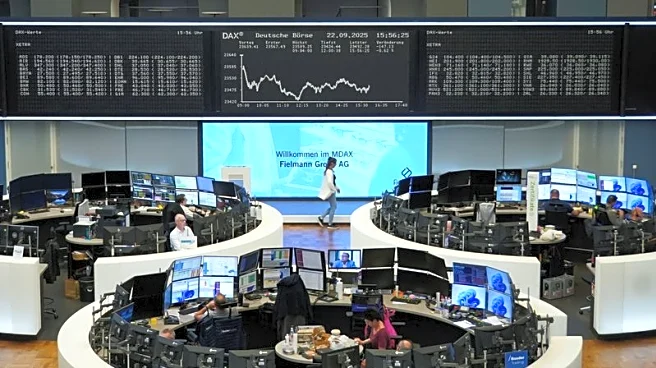What's Happening?
Wells Fargo has reported higher-than-expected profits for the third quarter, with net income reaching $5.59 billion, or $1.66 per share, surpassing analyst predictions of $1.55 per share. This financial success comes after the U.S. Federal Reserve lifted a seven-year asset cap on the bank, which had been imposed due to a fake accounts scandal. The removal of the cap allows Wells Fargo to pursue growth more aggressively, as evidenced by its increased return on tangible common equity (ROTCE) target from 15% to 17-18%. The bank's investment banking sector also performed well, with fees rising 25% to $840 million, driven by major deals such as advising Union Pacific on its $85 billion acquisition of Norfolk Southern.
Why It's Important?
The lifting of the asset cap marks a significant turning point for Wells Fargo, enabling it to expand its operations and improve profitability. This development is crucial for the bank's competitive positioning against rivals like JPMorgan Chase and Citigroup, which have outperformed Wells Fargo in stock gains this year. The bank's strong credit quality and investment banking success indicate resilience in the face of economic uncertainties, potentially benefiting shareholders and clients. The increased ROTCE target reflects confidence in future growth, which could lead to enhanced shareholder value and a stronger market presence.
What's Next?
With the asset cap lifted, Wells Fargo is poised to accelerate its growth plans under CEO Charlie Scharf. The bank's focus on expanding its investment banking business and improving credit performance suggests continued efforts to strengthen its market position. As the U.S. economy shows resilience, Wells Fargo may further capitalize on its improved financial health to pursue additional strategic acquisitions and partnerships. The remaining consent order from 2018 still poses a regulatory challenge, but the bank's progress in closing other orders indicates a commitment to resolving past issues.













